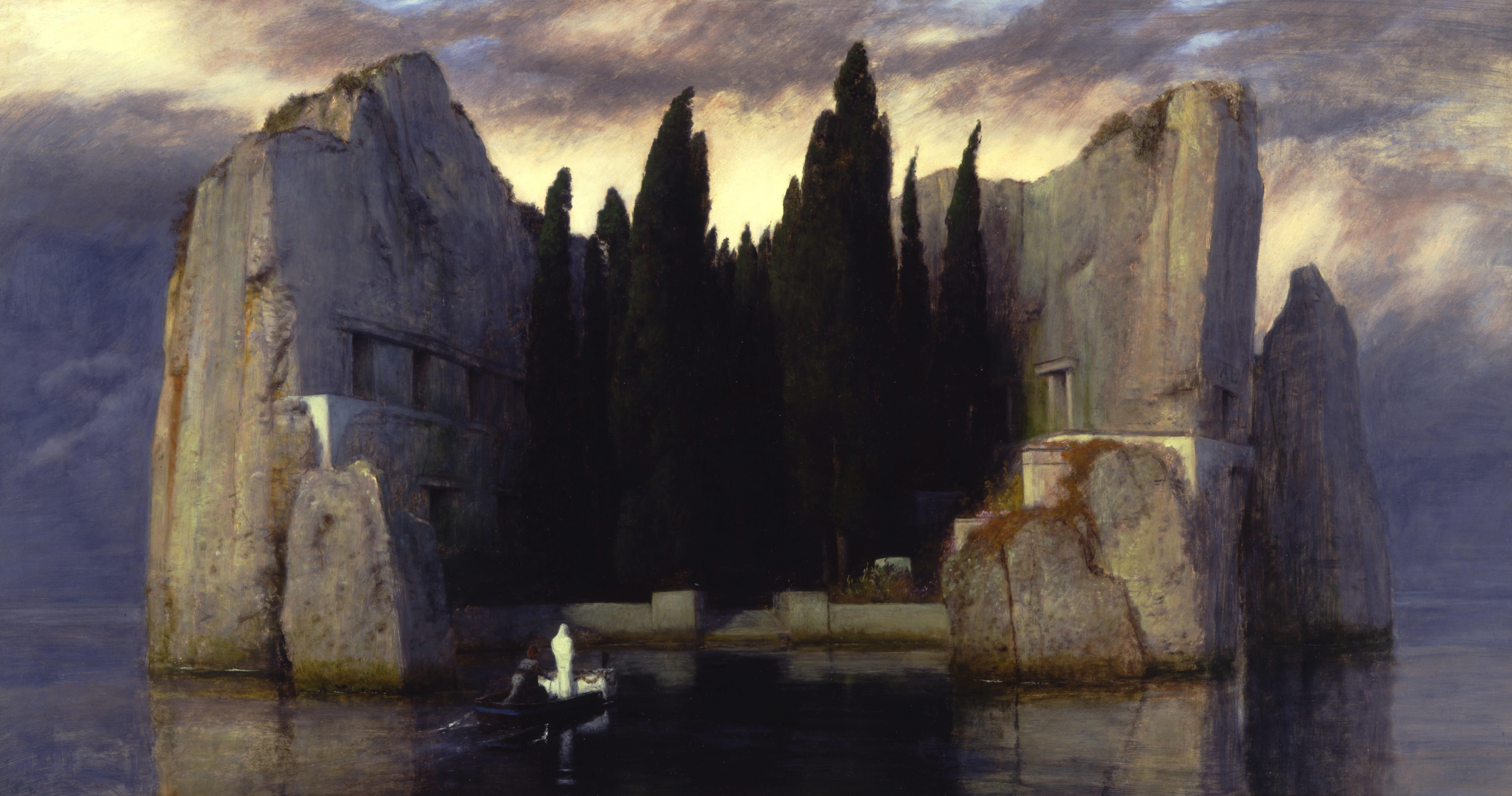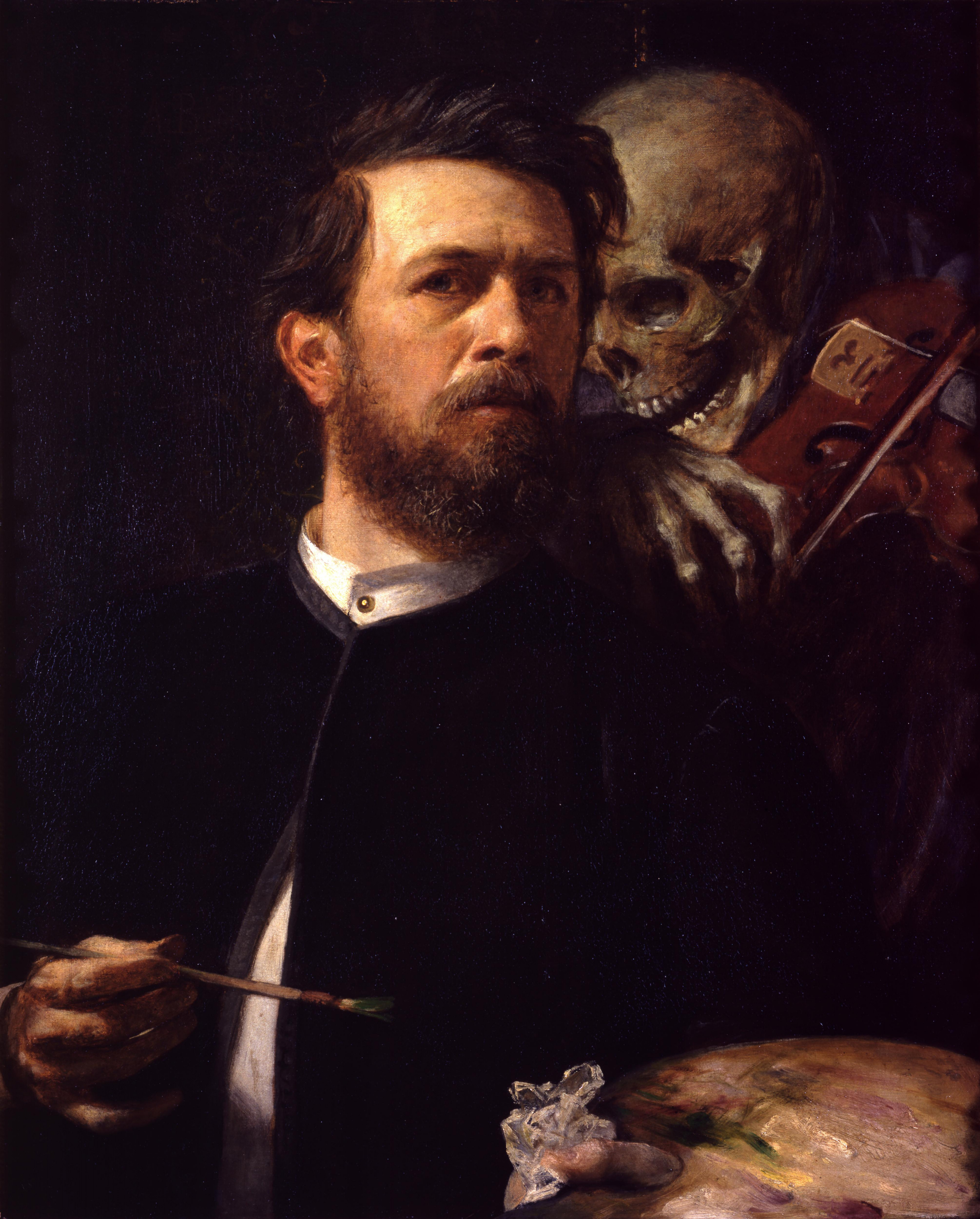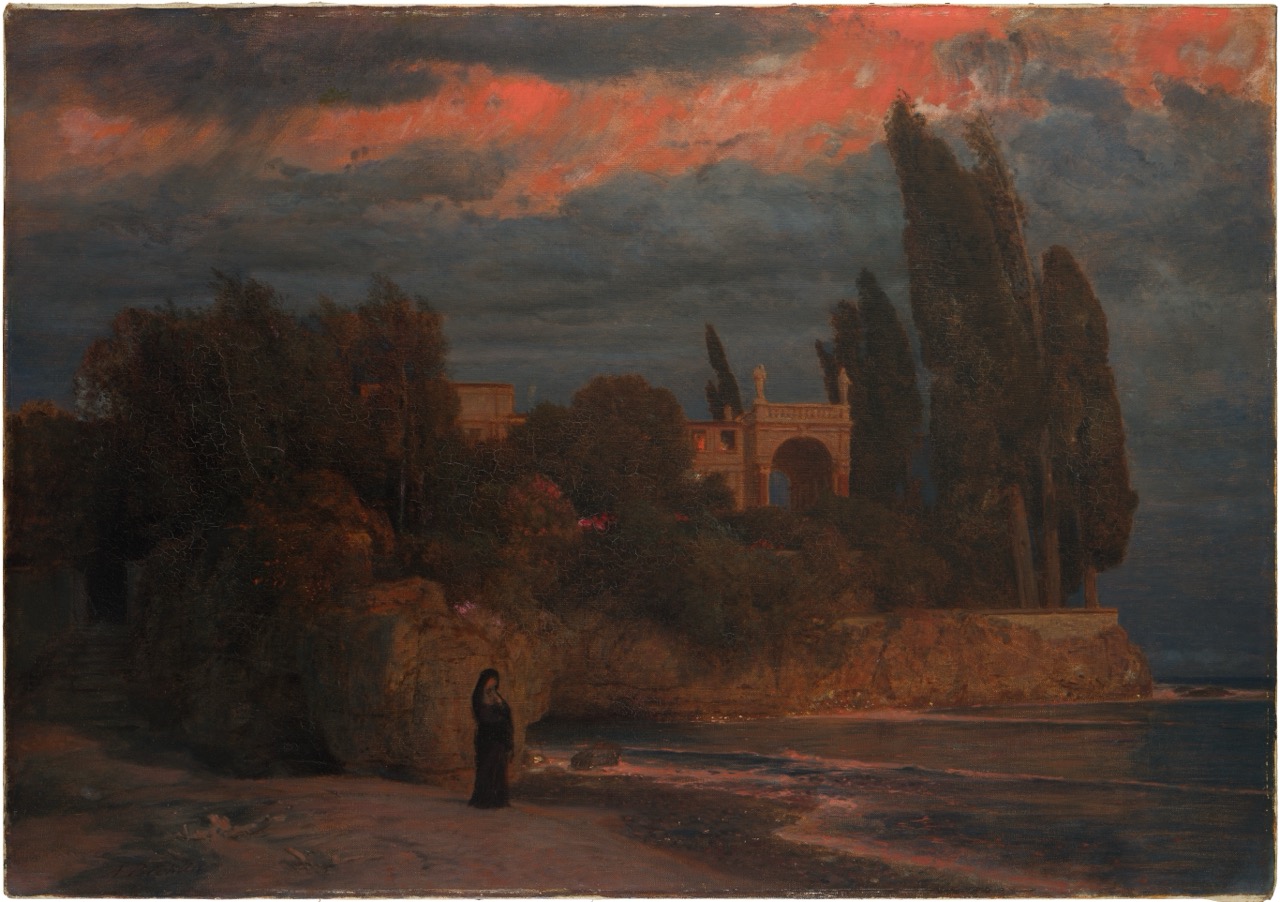Arnold Böcklin (1827–1901) was a Swiss painter. Following his education at the Düsseldorf Academy of Arts, he became especially known for his work in Italy. Initially recognized as a landscape painter, he gained a distinctive place in 19th-century European art with his works that combined mythological figures with natural depictions. In his body of work, which forms a bridge between Romanticism and Symbolism, nature, death, and mythology stand out as central themes. His most famous painting is Die Toteninsel (Isle of the Dead).
Childhood and Education
Arnold Böcklin was born in 1827, in Basel, Switzerland. After completing his secondary education there, he pursued art studies. In 1845, he entered the Düsseldorf Academy of Art, where he studied under Johann Wilhelm Schirmer, one of the leading landscape painters of the period. During his years at the Academy, he encountered the influences of German Romanticism and deepened his interest in depicting nature. While observing various genres, from history painting to portraiture, he concentrated especially on the landscape tradition. His student works laid the foundation for the nature-centered style that would later merge with mythological subjects.
Career
After completing his education, Böcklin worked in various European cities to develop his career. During the Revolution of 1848, he was in Paris, where he studied works in the Louvre and came into contact with contemporary French painters. In 1850, he traveled to Rome, where his encounter with ancient art was pivotal to his artistic development.
In his early years, Böcklin painted landscapes, but gradually he began integrating mythological figures into natural settings. In the mid-1850s, he married in Rome, yet financial difficulties compelled him to return with his family to Germany in 1857. In 1860, he was appointed as a professor at the Weimar Art School, but he soon resigned, preferring to work independently.
As of the 1870s, he experienced a particularly productive period in Munich and Florence. His most famous work, Die Toteninsel (Isle of the Dead, 1880), brought him widespread acclaim and reached broad audiences across Europe through engravings. In the final years of his life, he withdrew to his villa in Italy, where his mythological interpretations, vivid sense of color, and imaginative compositions established him as one of the most distinctive figures of nineteenth-century European painting.
Techniques
At the outset of his career, under the influence of the Düsseldorf School, Böcklin produced detailed landscape studies. Over time, however, he adopted a a more free and expressive approach to light, color, and atmosphere. His compositions are marked by strong color contrasts, dramatic light and shadow, and powerful spatial arrangements.
His figures often appear as integral parts of nature; mythological beings such as Pan, fauns, tritons, and nymphs are harmoniously merged into the landscape. He applied oil paint with bold, pronounced brushstrokes, imparting a dynamic surface quality to his canvases. This method positioned him both as a follower of the Romantic landscape tradition and as one of the forerunners of Symbolism.
Notable Works
Die Toteninsel (Isle of the Dead): Böcklin became widely known through Die Toteninsel, of which he painted five different versions between 1880 and 1886. The composition, depicting a rocky island with cypress trees and a boat carrying a coffin, reflects themes of death and eternity. Its influence continued into the twentieth century, leaving a mark on Surrealist painters such as Giorgio de Chirico and Max Ernst. Interest in the painting later acquired a political dimension during the period of Adolf Hitler, who sought to include Die Toteninsel in his personal collection and described Böcklin as “a great representative of German art.”

Die Toteninsel, Version 3 (Staatliche Museen zu Berlin, Nationalgalerie / Andres Kilger)
Pan in den Schilfrohren (Pan in the Reeds, 1856): In this painting, the mythological figure Pan is depicted as part of the natural environment. It is regarded as an early example of Böcklin’s fusion of landscape and mythology.
Der Kampf der Kentauren (The Battle of the Centaurs, 1873): This mythological scene demonstrates the artist’s dramatic style through powerful movement, muscular bodies, and the intense use of color.
Selbstbildnis mit fiedelndem Tod (Self-Portrait with Death Playing the Fiddle, 1872): In this self-portrait, a figure of Death playing the violin appears behind the artist. Reinterpreting traditional memento mori iconography, the work presents death not as a threat but as a source of inspiration.

Selbstbildnis mit fiedelndem Tod (Staatliche Museen zu Berlin, Nationalgalerie / Andres Kilger)
Heiliger Hain (Sacred Grove, 1882/83): With its depiction of a worship scene, the painting creates a religious and symbolic atmosphere. Its use of strong contrasts between light and shadow, together with dark tonalities, emphasizes Böcklin’s Symbolist dimension.
Villa am Meer (Villa by the Sea, 1871–1874): An oil on canvas measuring 108 × 154 cm, this painting depicts a female figure gazing at the sea, though her identity and purpose remain ambiguous. Böcklin deliberately imbued the scene with multiple meanings, evoking associations of sorrow, transience, and melancholy. The work exists in five different versions.

Villa am Meer (Städel Museum)
Legacy and Influence
Arnold Böcklin is regarded as one of the artists who formed a transition between Romanticism and Symbolism in nineteenth-century European painting. His approach of integrating mythological figures into depictions of nature had a particular impact on German Symbolist painters of the 1890s. Franz von Stuck and artists associated with the Jugendstil movement drew inspiration from Böcklin’s works. The naming of the journal Pan, first published in Berlin in 1895, reflected his significance in the artistic milieu of the period.
In the early twentieth century, Böcklin continued to inspire the Surrealists. Artists such as Giorgio de Chirico and Max Ernst interpreted the dreamlike atmosphere of his paintings as a precursor to their own explorations of the subconscious. During the 1930s, Böcklin’s works were re-emphasized within the framework of Nazi Germany’s cultural policies.
Today, Böcklin is recognized as a painter who played a role in the development of Symbolist art and as a forerunner of modern art, distinguished by his original synthesis of themes of nature, death, and mythology.
Death
In 1892, Arnold Böcklin suffered a stroke in Zurich, after which his health declined and his artistic production became limited. He died on 16 January 1901 in his villa at San Domenico, near Fiesole, Florence. His grave is located in the Cimitero degli Allori in Florence.



